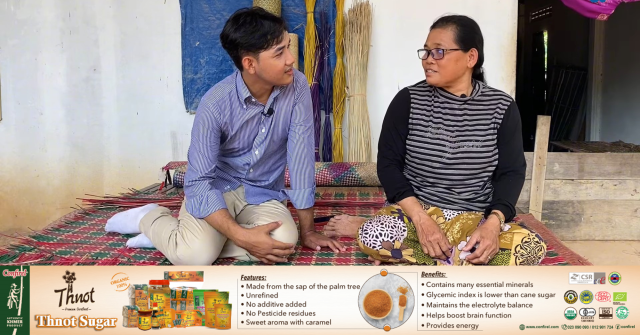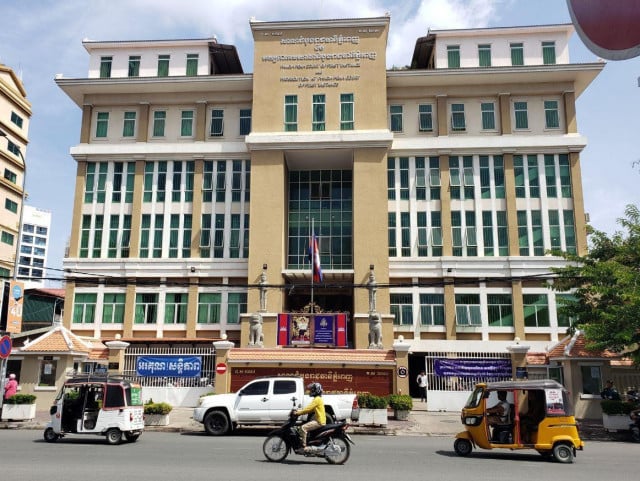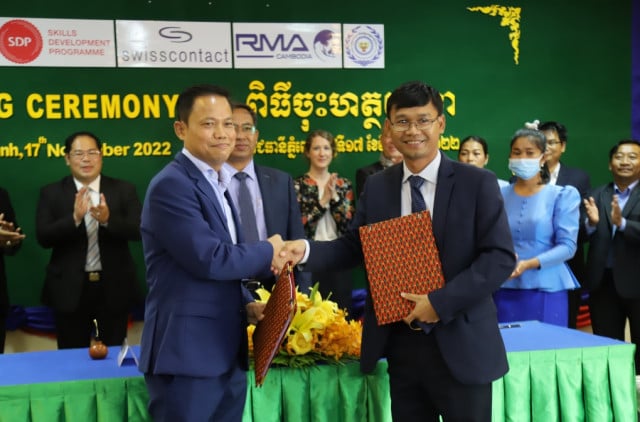Ho Pach Keeps Alive Traditional Pa’av Mat Braiding Skills

- By Zul Rorvy
- December 16, 2023 3:00 PM
SIEM REAP — Braiding mats has been one of Ho Pach’s lifetime jobs. Using Licuala spinosa, called pa’av in Khmer language, the mats she weaves are organically durable, affordable and comfortable. Furthermore, through her work, this traditional skill is being preserved. However, pa’av, which is a mangrove palm, is getting rare, she said during an interview at her home in Angkor Thom district’s Leang Dai commune in Siem Reap province.
_1702712490.png)
Zul Rorvy: When did you start developing mat-braiding skills?
Ho Pach: I learnt this from my mother when I was 13 years old. It was something that fascinated me. When I came home from the farm, I would go straight to braiding more mats even though it was nighttime and I had to use an oil lamp. Once it was completed, I had to carry the mats to the market to sell them. This was also a mean to earn some basic income at the time.
Zul Rorvy: Is it getting hard to find pa’av today?
Ho Pach: Yes, it is gradually becoming harder to find pa’av around my area now. To find enough of this plant, I have to travel with groups to provinces such as Kampong Thom, which is about 160 kilometres from Siem Reap. Our team, sometimes consisting of 20 people, leaves at 1:00 am, returning home at around 9:00 pm on the same day, to find pa’av.
It costs us around 50,000 riels each (around $12.50) for transportation and food. A lucky hand might find between three to four batches of pa’av. That may amount to the same number of mats. We can find this plant in a protected forest. Although the place is protected, pa’av is allowed for harvesting. However, the forest near my village does not allow us to take pa’av. An average size mat can be around 1.5-by-2 metres depending on demand. From start to finish, it takes around two weeks to make the final product.
_1702712595.png)
Zul Rorvy: How do you spot the best pa’av to pick?
Ho Pach: It can be tricky. We prefer the one that is smooth and less spiky. They should be green, long and flexible. Older stems are not liked. Once obtained, we have to go through some basic processes such as peeling them into smaller sections, drying them and sometimes dyeing them if you want colour.
Zul Rorvy: Based on what you have explained, making mats this way is very work intensive. How much does each mat cost?
Ho Pach: The price ranges from 40,000 riels ($10) to 120,000 riels ($30). At times, it is not easy to turn a profit. However, this is the skill I have. Middlemen might buy my mats for further distribution. Some other times, I just put them on my motorbikes and sell them at the markets.
_1702712654.png)
Zul Rorvy: What else can you use pa’av for?
Ho Pach: Besides mats, we can also use this plant to make brooms. It can be used in some dishes as well as wraps for the traditional ansom cake. This kind of wrap can make the cake look very beautiful. Pa’av mat is very suitable for normal indoor use. It can last reasonably long if cared for. During hot days, it is very comfortable to sleep on.
Written in Khmer for ThmeyThmey News, the story was translated by Ky Chamna for Cambodianess News.
To watch the original Khmer interview, click here.
Related article:
Traditional Palm Tree Sheath Brooms: Green, Affordable and Durable















